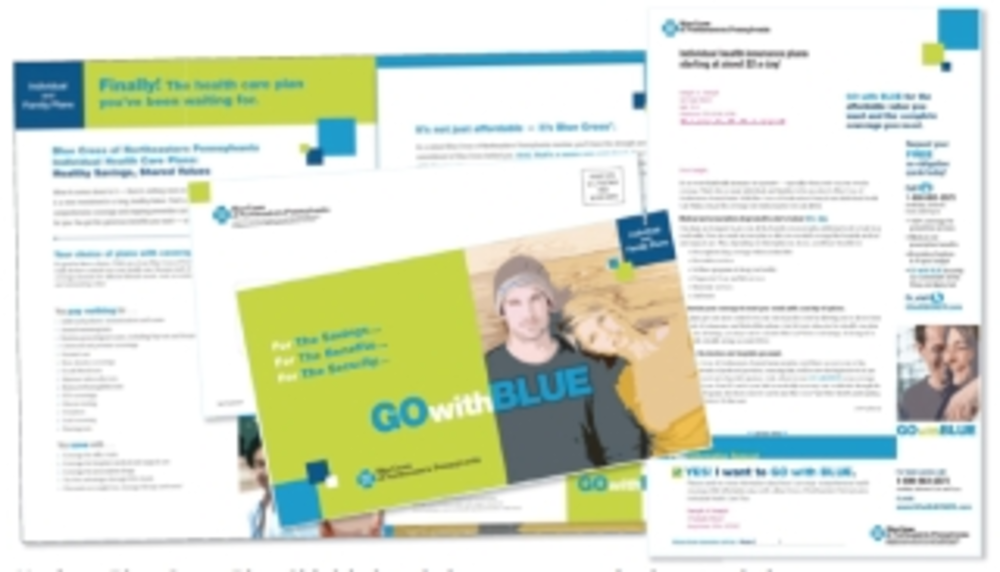The 2010 Patient Protection and Affordable Care Act (PPACA) — informally known as Obamacare — has changed the target audience of health insurance companies. Whereas before, health insurance companies marketed themselves in a b-to-b environment, the mandate that requires uninsured individuals to purchase an insurance plan that meets basic coverage standards by 2014 has created a new health insurance market, which analysts estimate include between 30 to 40 million uninsured U.S. citizens. This means that insurance companies need to be more adept at b-to-c marketing.
An August/September 2011 Harte-Hanks study revealed that 83% of respondents said they are planning to compete vigorously for a marketing advantage in response to healthcare reform, while 72% admitted they lack the strategy, leadership and funding to do so.
“It’s not a trend — it’s a sea change in the industry that is transforming companies from top to bottom,” says Scott Overholt, VP and group account director at The Agency Inside Harte-Hanks.
Overholt notes the creation of new departments established within insurance companies to specifically handle healthcare reform. Selling and marketing insurance to consumers instead of groups requires a complete structural change, including new IT systems, customer service and sales departments, as well as new claims and billings processes.
Horizon expands outreach
to Hispanic community
to Hispanic community
To reach out to the large Hispanic community in Hudson County, New Jersey, Horizon Blue Cross Blue Shield of New Jersey launched a Spanish-English language pilot website, HorizonAzul.com, on April 16 as part of the Tu Seguro Azul (Your Blue Insurance) initiative.
Click to read full case study.
“Everything set up in the company to do group business has to be reestablished to do new business — marketing plus everything else,” Overholt explains.
However, Obamacare alone is not the only dynamic influencing this transition. The shift is a combination of several issues, including unemployment, more people transitioning into Medicare, small businesses not offering benefits and businesses increasing employee insurance contributions.
“I think Obamacare may have sped up the process, but it wasn’t the only factor driving [the shift to b-to-c],” says Tom Rubino, director of public affairs and advertising at Horizon Blue Cross Blue Shield of New Jersey.
While Horizon had already been directly marketing to consumers, Rubino says the company has begun a bigger push to enhance member experience and target more consumers directly. For example, it recently launched a Spanish-language website for its Hispanic members, as well as a mobile site. It also has a staffed health van that visits senior communities and provides information. Rubino estimates that there are 1.4 million uninsured potential customers in New Jersey.
Lisa Lough, Cigna‘s VP of consumer marketing, says that while the company continues to focus on b-to-b initiatives, Cigna has been marketing directly to consumers for more than 20 years. However, it is aggressively expanding its consumer marketing agenda. In 2010, the company launched a b-to-c acquisition marketing initiative.
“The individual and family plan market for medical insurance could be as large as 25 million within the next couple of years,” Lough says. “It’s certainly a market that is poised for significant growth in the coming years, and healthcare reform outcomes will potentially impact that growth.”
While the marketplace provides insurers the opportunity to work directly with consumers, Cameron Thompson, group managing director at Acxiom, says the biggest challenge lies in understanding the consumer. As insurance companies have been accustomed to dealing with members through the latter’s employer or business group, he says they are unfamiliar with consumers and don’t know how to market to them directly.
“[Marketers] haven’t been doing market testing in this area, so they don’t know what the key indicators should be, what the response rate should be — or what the response is,” Overholt says. “Now, people will be coming in and out of the sales process in so many different places in the multichannel arrangement … It’s a new market and a new way of marketing to figure out.”
Insurance providers ultimately need data to understand the consumer on an individual level. “Insurers are looking for overlays to individual customers. They want to know more about individual plan holders, demographic interest, life stage, preference of children, household net worth, behaviors and attitudes that frame up the person,” Thompson says. “Getting every person on their insurance plan is not the answer, it’s about getting the right people,” he adds.
Elena Kambitsi, VP of product development and market analytics for Blue Cross of Northeastern Pennsylvania, admits the company has done “amazing things” with informatics on the clinical side but not so much on the consumer side.
To gain a better understanding of consumers, Blue Cross is in the midst of a marketing database project with Deloitte, which began in March and ends in August. Blue Cross needs insight into the lifestyle of everyone in their 1.2 million person market with the aim of assigning each member a lifestyle dependent score. “It’s a better risk score than simply looking at claims,” Kambitsi says. “The plan is to integrate customer service [and] utilization management, and have the same great strides we’ve had on the clinical side, in understanding consumers at every point of interaction … on [the] marketing side as well.”
While the PPACA may get struck down in the Supreme Court this summer, marketers say they will continue their b-to-c efforts. “We only get one chance to do it right the first time,” Kambitsi says. “If consumers don’t like the experience, they won’t come back.”








